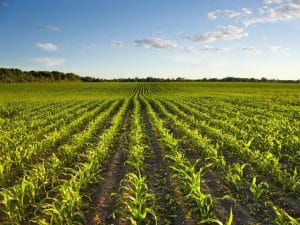Situations often arise when the enterprise has its territory in use, but in order to carry out certain activities, for example, to travel to its warehouses or install a transformer substation, it needs to cross or use a neighboring plot of land.
Or a similar situation: agricultural producers have a need to lay an irrigation system through a neighboring plot of land that belongs to another person.
In this case, is it necessary to enter into a lease agreement for the land plot?
In this case, you should pay attention to the "land easement" and determine what the difference is between an easement and a lease. After all, this approach will give an opportunity to understand what is better suited in a specific case.
The right of land easement - this is the right of the owner or land user of a land plot or another interested person to limited paid or free use of someone else's land plot.
Easements can be established for the following:
- right of way;
- right of way on a vehicle on an existing road;
- the right to place temporary structures (small architectural forms);
- the right to lay and operate power lines, communications, pipelines, and other linear communications;
- the right to lay a water pipeline on one's land plot from someone else's natural reservoir or through someone else's land plot;
- the right to place (move, move) objects of the engineering infrastructure of reclamation systems;
- the right to take water from a natural reservoir located on a neighboring land plot, and the right of passage to a natural reservoir;
- the right to drive livestock along the available path.
The listed list is not exhaustive. Easement can be established for other similar needs. It is important to predict exactly what the land easement covers (what rights) in the document (contract, will or court decision) on the basis of which the easement arises.
It is important to understand that the right of land easement does not lead to the deprivation of the owner of the land plot, in respect of which the land easement is established, of the rights of possession, use and disposal of it. That is, the owner will fully walk around his territory, carry out his activities, continue to use the plot for his own purposes, and the user, according to the land easement, will be able to use the plot only for a certain defined need.
If we talk about the lease agreement, then only the lessee will be able to use and own the land, and the lessor will not be able to do this.
In addition to the fact that these legal mechanisms differ in essence, there are a number of other legislative differences. Let's consider them in the table.
EASEMENT | RENT |
It can be established by contract, law, will or court decision. | It arises on the basis of a contract. |
Use can be both free and paid. | Paid only. |
The common feature is that both the land easement and the right of lease are preserved in the event of the transfer of ownership of the land plot in respect of which they are established to another person. | |
Land easement can be both temporary and permanent | A land plot can only be leased for a short period of time. |
It can be established in relation to a part of the land plot. | The contract is concluded for the entire plot. |
A land easement is not subject to alienation, cannot be the subject of sale, pledge, and cannot be transferred in any way by the person in whose interests this easement was established to other individuals and legal entities. | The right to lease an agricultural plot of land may be alienated, transferred as a pledge by the lessee without the consent of the owner of such a plot of land, except for cases specified by law. |
A contract is concluded + state registration in the register of property rights. | A contract is concluded + state registration in the register of property rights. |
If an easement is required for part of the land plot, then before concluding the contract and state registration of such a right in the Register of Property Rights, information about part of the land plot must be entered in the State Land Cadastre. To do this, you need to contact the state cadastral registrar, and first prepare approved technical documentation with land management regarding the establishment of the boundaries of part of the land plot. Such documentation is prepared by the land manager.
Thus, when deciding which contract to conclude, it is important to understand the nature of the activity to be carried out on someone else's land and whether the direct activity of the owner on the plot will not interfere with the user, as well as to take into account the nuances outlined above.
If the owner of the land plot refuses to enter into an easement agreement, the interested person can apply to the court with a corresponding lawsuit so that the court will decide this issue.




